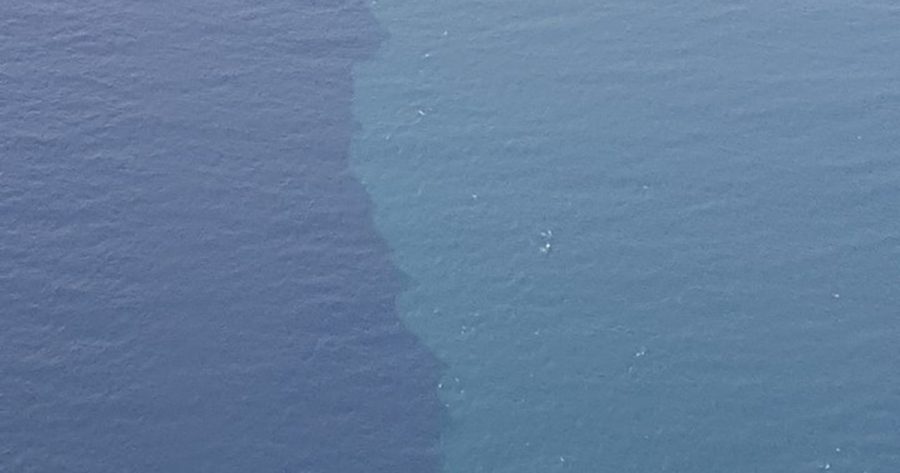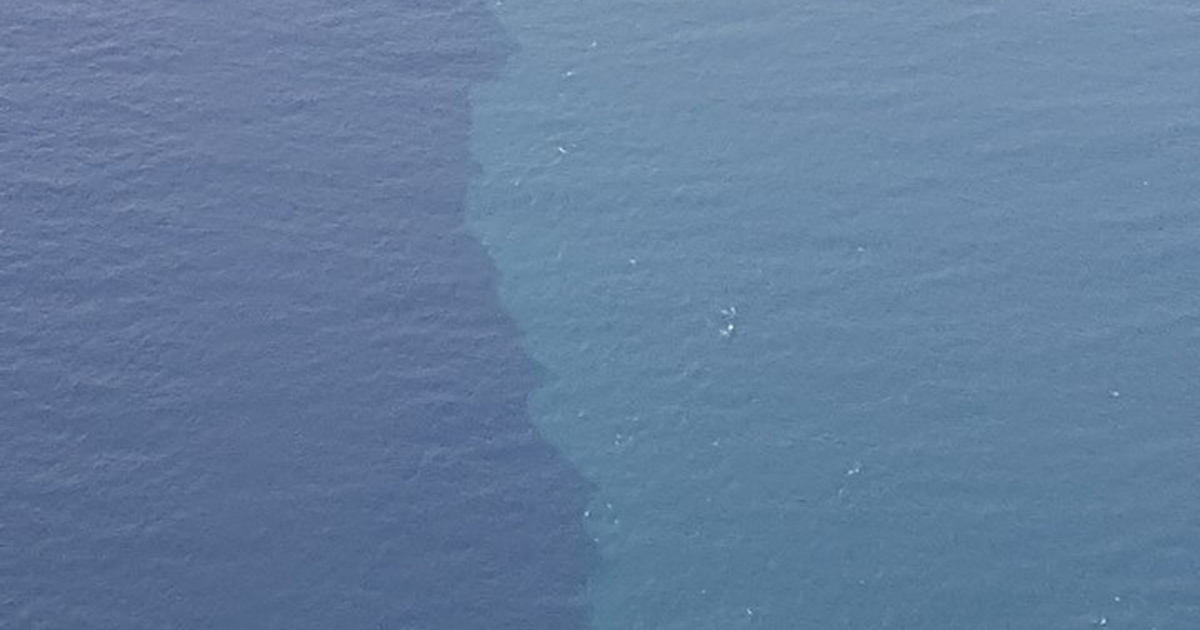
What Causes The False Bay Colour Front?
An aerial photo taken by Stan Sanetra this morning in South Africa, flying over the Western Cape’s False Bay, had many people wondering just what caused the phenomenon of the ocean appearing to be split in half, displaying two distinct colours on either side of an invisible boundary line. We turned to an expert – […]

An aerial photo taken by Stan Sanetra this morning in South Africa, flying over the Western Cape’s False Bay, had many people wondering just what caused the phenomenon of the ocean appearing to be split in half, displaying two distinct colours on either side of an invisible boundary line.

We turned to an expert – marine conservation photographer Jean Tresfon – who in turn referred us to ‘Learn to Dive Today’, a Cape Town dive school which has written an extensive article about it here.
In a nutshell – the phenomenon is called a Colour Front and is most common in False Bay during the summer months, particularly in October and November. It can also disappear very rapidly. And it’s not where the Atlantic and Indian Oceans meet.
While most of us don’t notice the divide when we’re down on the ground without the privilege of a bird’s eye view, you may have noticed, when swimming underwater in False Bay, how sometimes you can see your hand in front of your face… and sometimes you can’t.
“In oceanography, a front is the interface or boundary between two separate masses of water. In this case, the water masses are easy to discern, because they are of different colours. There are usually other characteristics of the water on each side of the front that differ, too. Fronts are either convergent (the water masses are moving towards each other) or divergent,” says Learn to Dive Today.

After some sampling, studying and investigation, it’s been found that False Bay’s Colour Fronts are not caused by pollution or plankton, but more likely by suspended sediments.
The phenomenon at False Bay is most likely to occur after the southerly or south easterly wind has been blowing for a few days… sometimes coupled with spring tide conditions that set up a wide surf zone along the northern end of False Bay.
According to Learn to Dive Today, these conditions “disturb the sediment on the ocean bottom and drive the waves further up the beach than usual. Particles of buoyant calcium carbonate from the sea floor and eroded from the cliffs at Swartklip are lifted up into the water column, changing its colour to a milky-green shade. Wind-driven circulation patterns in the bay push the front from its original location in a southerly direction, towards Simon’s Town.”
Apparently there’s also a slight temperature difference between the differently shaded water, with the milky green water being slightly higher – experts suggest this could be because “the milky water originated in the surf zone, which is shallower and therefore warmer, or because the high concentration of suspended particles in the milky water caused greater absorption of heat from the sun”.
Now you know! You can read about it in more detail here.
